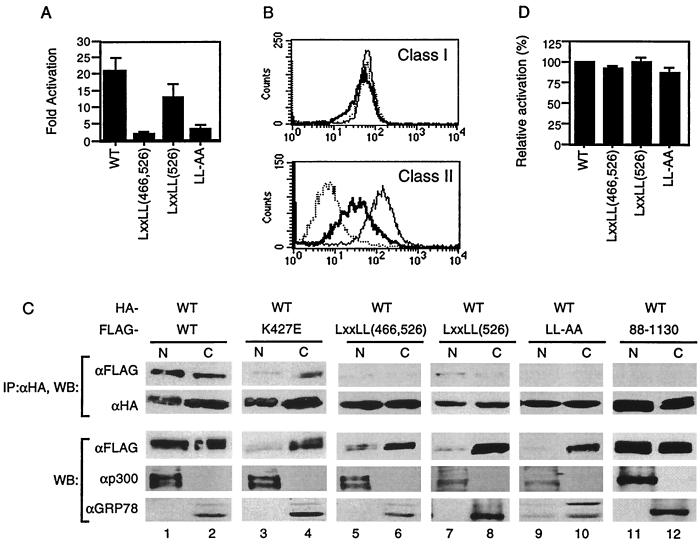FIG. 5.
The LXXLL motifs are crucial for transactivation function and self-association. (A) 293T cells were cotransfected with the MHC class II promoter-driven luciferase and the indicated plasmid. The fold activation was calculated as in Fig. 1B. (B) Intact LXXLL motifs are required for transactivation function. RJ2.2.5 cells were stably transfected with wild-type and the LXXLL(526) mutant DNA. Stable transfectants were then stained with the antibody recognizing MHC class I (top panel) or MHC class II (bottom panel) and analyzed by flow cytometry. Dotted line, RJ2.2.5 cells; thick line, RJ2.2.5 cells transfected with LXXLL(526); thin line, RJ2.2.5 cells transfected with wild-type CIITA. (C) 293T cells were transfected with the indicated plasmids, and nuclear and cytoplasmic fractions were prepared. Equal amounts (micrograms) of lysates from each fraction were used for immunoprecipitation with anti-HA, followed by Western blotting with anti-HA or anti-FLAG antibodies. Anti-p300 and anti-GRP78 antibodies were used to assess the degree of contamination during cell fractionation. N and C, nuclear and cytoplasmic fractions, respectively. Each part of the figure is representative of three independent experiments. (D) LXXLL motifs do not behave as dominant-negative proteins. Transfections were performed as in Fig. 2C using wild-type CIITA, the LXXLL mutants, and the MHC class II promoter-driven luciferase constructs. The relative activation was calculated using the luciferase values of the wild type in the absence of the mutant as 100%.

